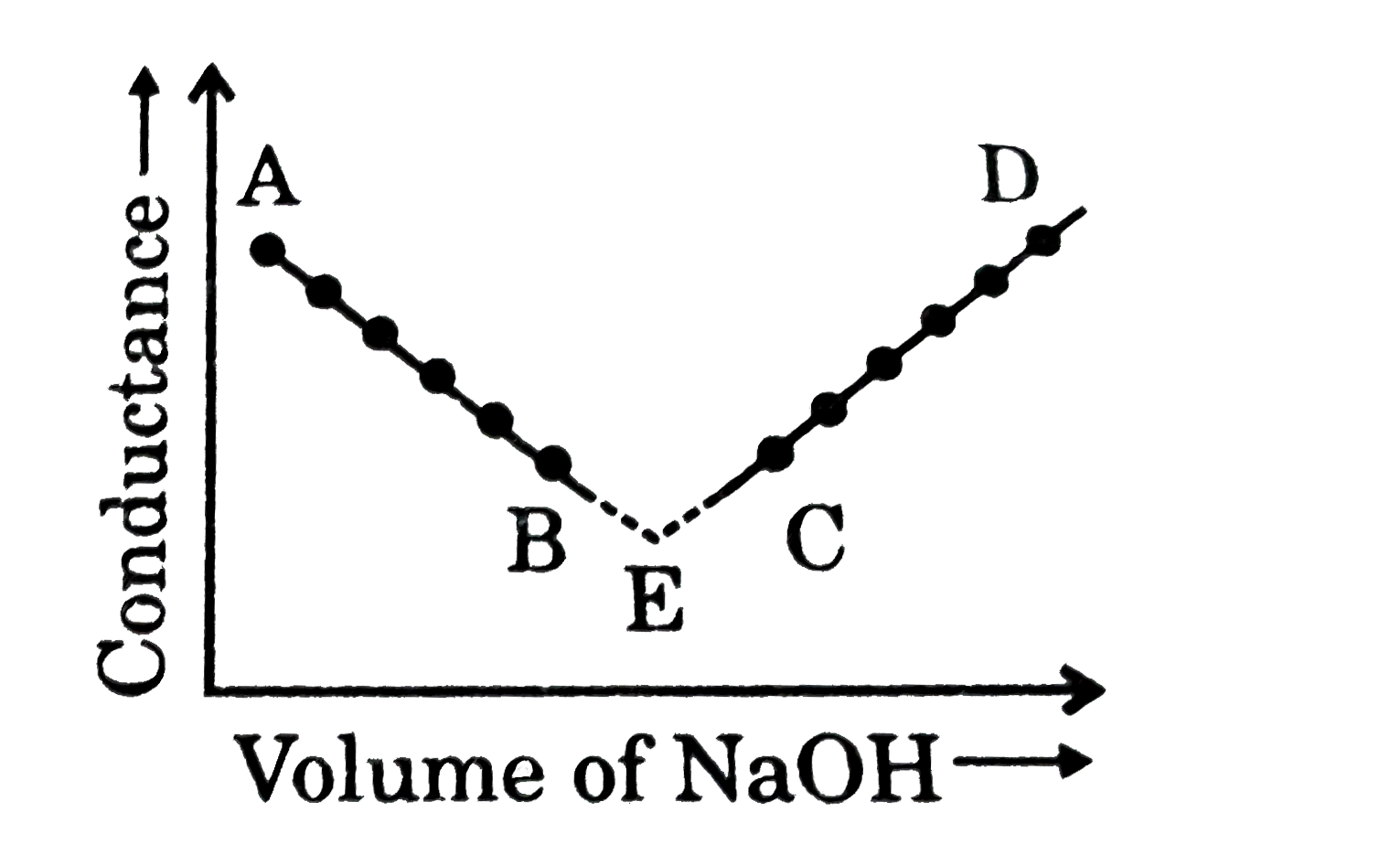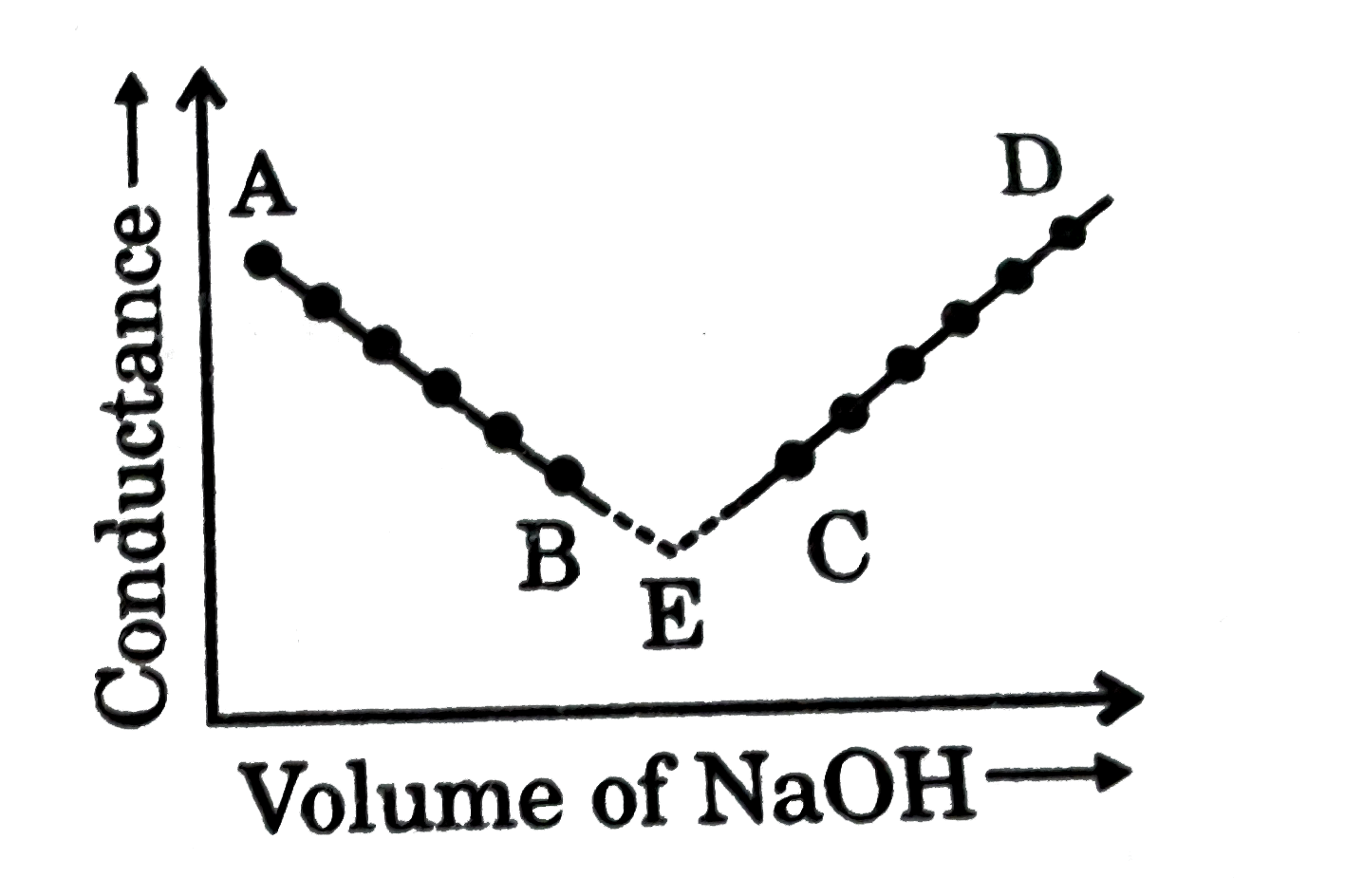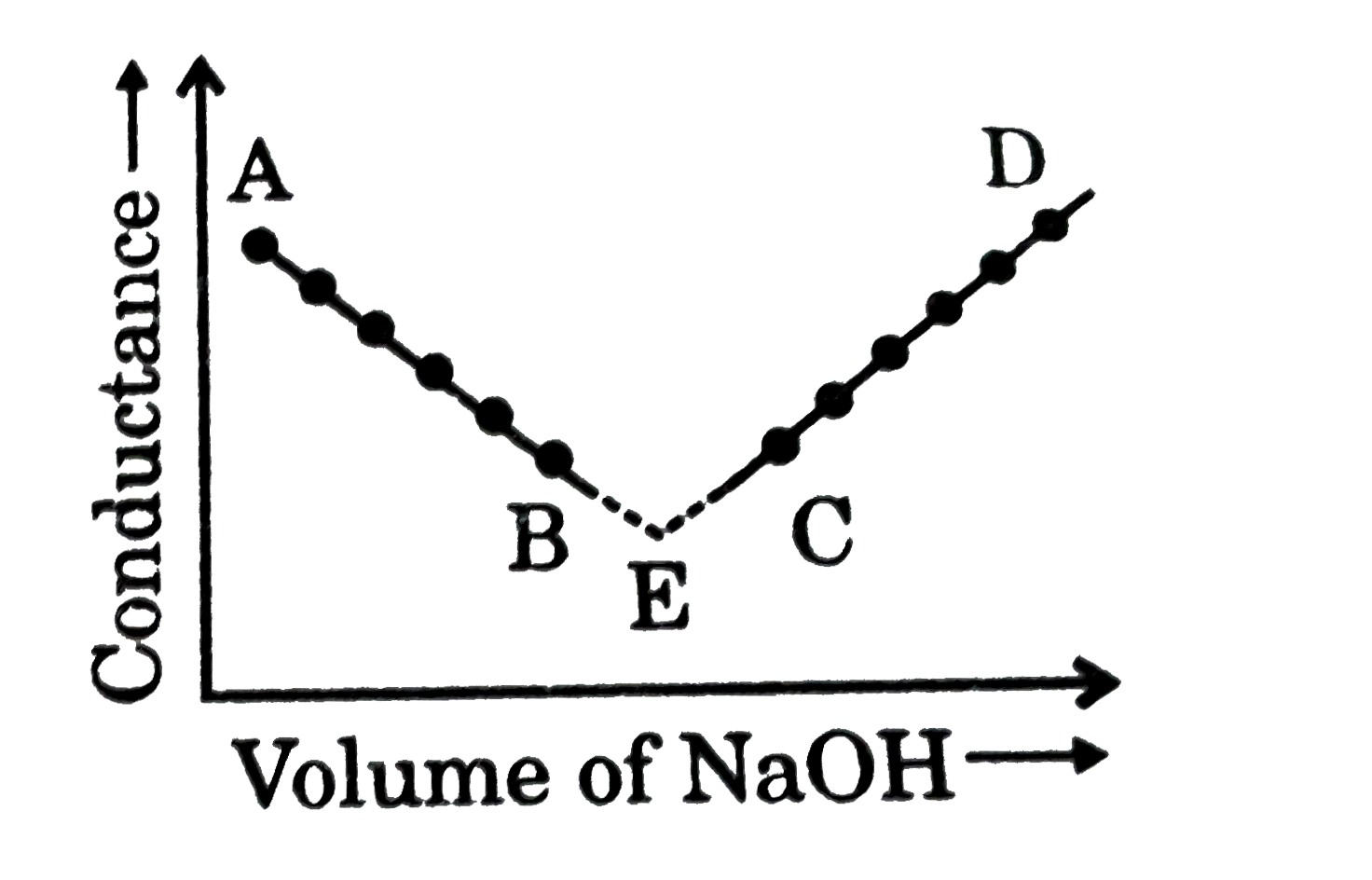Oftern agroundglas stropper gets stuck in the neck of a glass blttlecontinngNaOH solution . This is due to ,
The presence of dirt particles in bhetweemn
The formation of solid silicate sin-between by the reaction sof SiO2 of galss with NaOH .
The formation of Na2CO3 in-between by the reaction of CO2 of aire and NaOH.
Glass contains a born compound which forms a precipotte with the NaOH solution .
The correct Answer is:B
SiO2+2NaOH→Na2SiO3Sodiumsilicate+H2O
Topper's Solved these Questions
- P-BLOCK GROUP 14 - CARBON FAMILYBOOK - CENGAGE CHEMISTRYCHAPTER - P-BLOCK GROUP 14 - CARBON FAMILYEXERCISE - Exercises (Assertion-Reasoning)
27 Videos
- P-BLOCK GROUP 14 - CARBON FAMILYBOOK - CENGAGE CHEMISTRYCHAPTER - P-BLOCK GROUP 14 - CARBON FAMILYEXERCISE - Exercises (Integer)
7 Videos
- P-BLOCK GROUP 14 - CARBON FAMILYBOOK - CENGAGE CHEMISTRYCHAPTER - P-BLOCK GROUP 14 - CARBON FAMILYEXERCISE - Exercises (Multiple Correct )
19 Videos
- P-BLOCK GROUP 13 - BORON FAMILYBOOK - CENGAGE CHEMISTRYCHAPTER - P-BLOCK GROUP 13 - BORON FAMILYEXERCISE - Exercise Archives (Subjecive)
9 Videos
- PERIODIC CLASSIFICATION OF ELEMENTS AND GENERAL INORGANIC CHEMISTRYBOOK - CENGAGE CHEMISTRYCHAPTER - PERIODIC CLASSIFICATION OF ELEMENTS AND GENERAL INORGANIC CHEMISTRYEXERCISE - Exercises (Archives )Subjective
4 Videos
Similar Questions
Reshma is the student of class X in a city school. One day she was sitting in the school garden with her friends during the recess. There was a tall tree at the edge of the garden having a large honeycomb attached to it. Some students were playing cricket in te school playground. Suddenly the cricket ball hit the honeycomb due to which a large numbr of honey-bees started flying here and there. Reshma was stung on her face by a honey-bee. The sting was so painful that Reshma started crying. She was immediately rushed to the science laboratory. One of her classmates Shanta gave her vinegar solution to rub on the stung area to get relief from pain. Another clasmate Amarjit, howerver, asked Reshma to rub baking soda solution on the stung area of face. On rubbing baking soda solution, Reshma felt a lot of relief from pain.
(a) What kind of liquid is injected into the skin when a honey-bee stings a person?
(b) Why did rubbing baking soda solution on the stung area of skin give relief from pain?
(c) What type of chemical reaction takes place when baking soda solution is rubbed on the honey-bee sting area?
(d) Why do you think rubbing the honey-bee sting area with vinegar could not give relief from pain?
(e) Name one plant whose stinging hair on leaves inject a similar liquid to that injected by honey-bee sting and can be treated by rubbing baking soda solution?
(f) What vaues are displayed by Amarjit in this episode?
View SolutionWhen an organge crystalline compound (A) was heated with common salt and concentrated sulphuric acid, an orange red gas (B) was evolved. Acidified solution of the comound (A) reacts with H2O2 to produce a deep blue solution due to the formation of comopund (C ). The gas (B) on passing through NaOh solution gave a solution (D). The solution on reacting with an aqueous solution of lead acetate gave a yellow precipitate of (E).
Name the compounds A,B,C,D ( present in the soluiotn ) and E ( present as ppt.)
View Solution
Knowledge Check
Ayush, a student from KOTA, was trying to open an old glass bottle containing NaOH. But the glass stopper got stuck. Can you suggest a reason for this happening?
AThere were particles of dirt in betweenBGlass contains a boron compound which forms a precipate with NaOH solutionCSolid Na2CO3 is formed in between by reaction of CO2 of air and NaOHDA solid silicate is formed in between by the reaction of SiO2 of glass with NaOHWhen the vapours of chromyl chloride are passed through NaOH solution, it turns yellow. This is due to the formation of
ANa2CrO4BNa2Cr2O7CCrCl3DCrO2Cl2Statement-1:Phenolphathalein can be used as indicator in the titration of weak acid with NaOH.
Statement-2 :Near the end point in the titration of weak acid with NaOH, the pH of the solutions is alkaline due to hydrolysis of anion.AStatement-1 is True, Statement-2 is True, Statement-2 is a correct explanation for Statement-1BStatement-1 is True, Statement-2 is True, Statement-2 is NOT a correct explanation for Statement-1CStatement-1 is False, Statement-2 is True.DStatement-1 is True, Statement-2 is False.
Fe+3 ions in an aqueous solution gives deep red colouration with both sodium acetate (in excess) and ammonium thiocyanate (slightly acidic). The deep red colouration obtained with ammonium thiocyanate gets decolourised on addition of a solution containing F− ions.
The deep red colouration is due to the formation of:
View SolutionThe principle on conductometric titration is based in the fact that during the titration, one of the ions is replaced by the other and invariably thses two ions differ in the ionic conductivity with the result that the conductivity of the solution varies during the course of the titration.Take,for example,the titration between strong acid, say HCl. and a strong base, say NaOH.Before NaOH is added the conuctance of HCl solution has a high value due ti the persence if highly hydrogen ions.As NaOH is added,H+ ions are the replaced by relatively slower moving Na+ ions.Consequently, the conductance of the solution decrease and this continues right upto the enuivalence point where the solution contains only NaCL.Beyond the equivalence point if more of NaOH is added, then the solution contains an excess of the fast moving OH− with the result that its as more of NaoH added, we plot the conductance value vs the amount of NaOH added we get curve of the type shown in figure.The descending portion AB represents the conductance before the equivalence point (solution cintains a mixture if acid HCl and the salt NaCL and the ascending portion CD represents the conductances after the equivalence point (solution contains the salt NaCL and the excess of NaOH). The point E which repersents only the minimum conductance is alkali and thus repersents the equivalence point.This point can, however, be obtained by the extrapoltion of the lines AB and CD and therefore one is not very particular in location this point experimentally as it is in the case of ordinary acid -base involving the acid base indicators

LET us take the specific exaanple of acetic acid being titration against NaOH.Before the addition the of alkali, the solution shows poor conductance due to feeble inization of acetic acid.Initially the addtion of alkali causes not only the replacement of H+ by Na+ but also suppresses the thus the conductance of the solution decrease in the begnning .But very soon the conductance starts increasing as addetion NaOH thus causing neutralizes the undissociated HAc to HAc with strong condutance eletroyte Na+Ac−.The increase in conducting OH− ions gtthe graph near the highly equivalence point actual equivalence point can as usual be ontained by the extrapoiation method
In all thses graphs it been assumed that the vloume change due addition of solution from burette in negligible heane vloume change of the sloution in beaker the conuctance of which is measured is almost constant throughout the measurement
If a 100 ml solution of 0.1 MHBr is titration using a very concentrated solution of NaOH then the conductivity (specific conductance0 of this solution at the equivalence wil be (assume volume change is negligible due addition of NaOH). Report your answer after mulitiplying it with 100 inSm−1
[Given : λ∘(Na+)=8×10−3Sm2mol−1,λ∘(Br−)=4×10−3Sm2mol−1]
View SolutionThe principle on conductometric titration is based in the fact that during the titration, one of the ions is replaced by the other and invariably thses two ions differ in the ionic conductivity with the result that the conductivity of the solution varies during the course of the titration.Take,for example,the titration between strong acid, say HCl. and a strong base, say NaOH.Before NaOH is added the conuctance of HCl solution has a high value due ti the persence if highly hydrogen ions.As NaOH is added,H+ ions are the replaced by relatively slower moving Na+ ions.Consequently, the conductance of the solution decrease and this continues right upto the enuivalence point where the solution contains only NaCL.Beyond the equivalence point if more of NaOH is added, then the solution contains an excess of the fast moving OH− with the result that its as more of NaoH added, we plot the conductance value vs the amount of NaOH added we get curve of the type shown in figure.The descending portion AB represents the conductance before the equivalence point (solution cintains a mixture if acid HCl and the salt NaCL and the ascending portion CD represents the conductances after the equivalence point (solution contains the salt NaCL and the excess of NaOH). The point E which repersents only the minimum conductance is alkali and thus repersents the equivalence point.This point can, however, be obtained by the extrapoltion of the lines AB and CD and therefore one is not very particular in location this point experimentally as it is in the case of ordinary acid -base involving the acid base indicators

LET us take the specific exaanple of acetic acid being titration against NaOH.Before the addition the of alkali, the solution shows poor conductance due to feeble inization of acetic acid.Initially the addtion of alkali causes not only the replacement of H+ by Na+ but also suppresses the thus the conductance of the solution decrease in the begnning .But very soon the conductance starts increasing as addetion NaOH thus causing neutralizes the undissociated HAc to HAc with strong condutance eletroyte Na+Ac−.The increase in conducting OH− ions gtthe graph near the highly equivalence point actual equivalence point can as usual be ontained by the extrapoiation method
In all thses graphs it been assumed that the vloume change due addition of solution from burette in negligible heane vloume change of the sloution in beaker the conuctance of which is measured is almost constant throughout the measurement
The most appropriate titration curve ibtained when a mixture of a strong acid (say HCl) and a weak acid (sayCH3COOH0 is titration with (say NaOH) will be
View SolutionThe principle on conductometric titration is based in the fact that during the titration, one of the ions is replaced by the other and invariably thses two ions differ in the ionic conductivity with the result that the conductivity of the solution varies during the course of the titration.Take,for example,the titration between strong acid, say HCl. and a strong base, say NaOH.Before NaOH is added the conuctance of HCl solution has a high value due ti the persence if highly hydrogen ions.As NaOH is added,H+ ions are the replaced by relatively slower moving Na+ ions.Consequently, the conductance of the solution decrease and this continues right upto the enuivalence point where the solution contains only NaCL.Beyond the equivalence point if more of NaOH is added, then the solution contains an excess of the fast moving OH− with the result that its as more of NaoH added, we plot the conductance value vs the amount of NaOH added we get curve of the type shown in figure.The descending portion AB represents the conductance before the equivalence point (solution cintains a mixture if acid HCl and the salt NaCL and the ascending portion CD represents the conductances after the equivalence point (solution contains the salt NaCL and the excess of NaOH). The point E which repersents only the minimum conductance is alkali and thus repersents the equivalence point.This point can, however, be obtained by the extrapoltion of the lines AB and CD and therefore one is not very particular in location this point experimentally as it is in the case of ordinary acid -base involving the acid base indicators

LET us take the specific exaanple of acetic acid being titration against NaOH.Before the addition the of alkali, the solution shows poor conductance due to feeble inization of acetic acid.Initially the addtion of alkali causes not only the replacement of H+ by Na+ but also suppresses the thus the conductance of the solution decrease in the begnning .But very soon the conductance starts increasing as addetion NaOH thus causing neutralizes the undissociated HAc to HAc with strong condutance eletroyte Na+Ac−.The increase in conducting OH− ions gtthe graph near the highly equivalence point actual equivalence point can as usual be ontained by the extrapoiation method
In all thses graphs it been assumed that the vloume change due addition of solution from burette in negligible heane vloume change of the sloution in beaker the conuctance of which is measured is almost constant throughout the measurement
the nature of curve obtained for the titration between weak acid vs strong base as described in the above will be
View SolutionAn inorganic compound (A) is a Lewis acid an d light yellow in colour. It fumes in moist air. The intensity of fumes further increase when a rod dipped in NH4OH is brough near it. The aciedic solution of the compound does not give andy precipitate on passing H2S gas. However, it gives a white precipitate on adding NH4OH solution in the presence of NH4Cl and the white precipitate dissovles on adding NaOH in excess.
The intensity of fumes increases due to the formation of
View Solution
